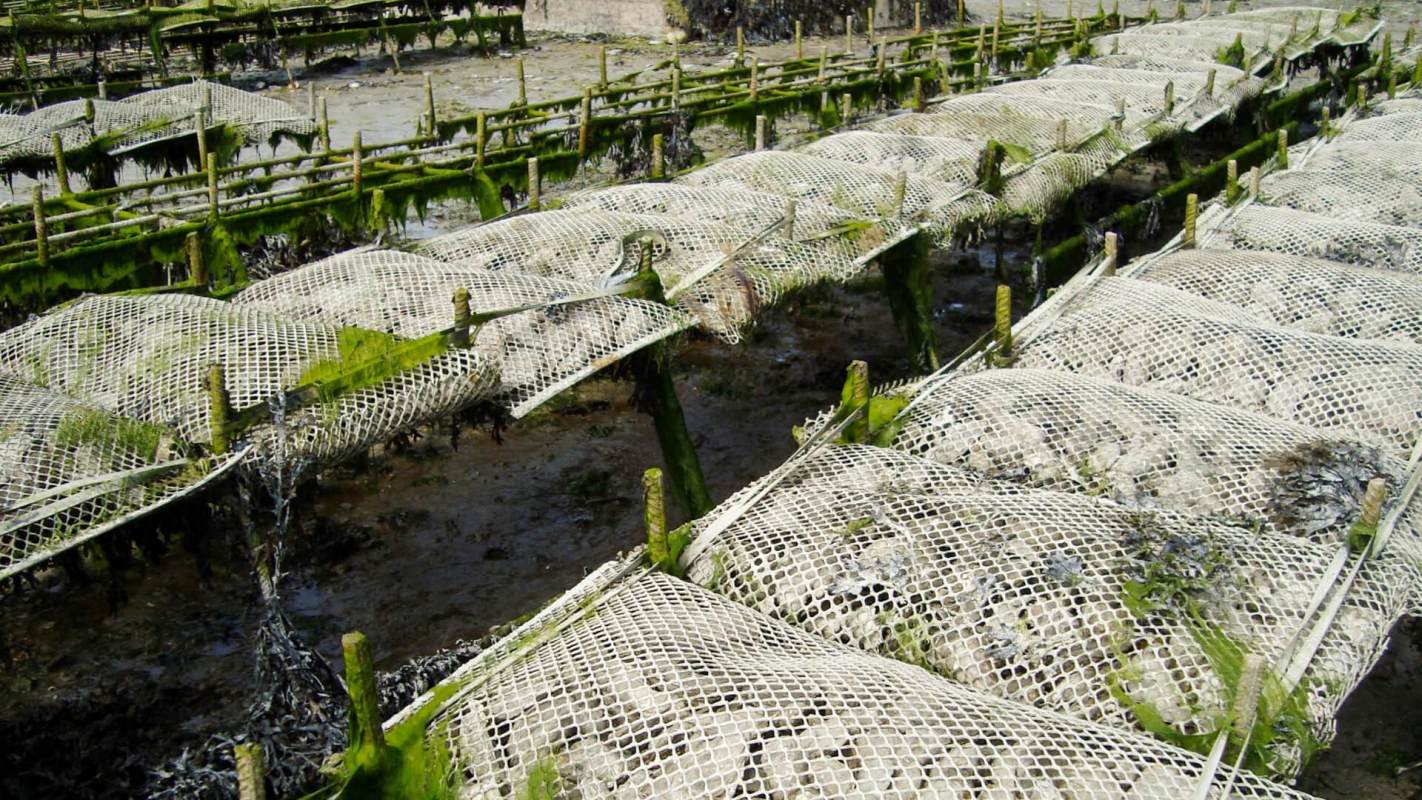Vertical ocean farms are an innovative approach to farming that can produce food and minimize environmental damage, all while cleaning up the oceans at the same time.
Most farming goes hand in hand with environmental issues like polluting gases; extensive use of land, water and pesticides; or even animal welfare issues.
But some mussel and oyster farms have started using a farming method that eliminates these problems and actually boasts a net environmental benefit.
What are vertical ocean farms?
Vertical ocean farms are inspired by Bren Smith's sustainable designs for GreenWave, an organization that supports a global network of regenerative ocean farmers.
The designs feature ropes strung across the surface of the water attached to floating buoys and seabed anchors. Mussel rocks and scallop nets hang from these ropes into the ocean, and oyster and clam cages hang down all the way to the seabed.
By using this design, the farming is practically invisible from the surface. Underneath the water, however, is a farm bursting with activity.
How do they work?
These farms require no additional input from the farmer to maintain an environment for the animals and plants to thrive.
In terms of sustainability, shellfish like mussels, clams, oysters, and scallops can all function in a variety of conditions, so there is no need to regulate the water quality or use any harmful chemicals in production.
What are the economic benefits?
This method of farming saves farmers on input costs and also provides more economic stability. After suffering the impacts of Hurricane Irene in 2011 and Hurricane Sandy in 2012, Bren Smith discovered that 90 percent of his shellfish cages on the seafloor had been smothered in displaced sediment.
"What I realized then was, this isn't a slow lobster boil of climate change," Smith told TED Talks. "We're on the front lines of a crisis."
This method also has the potential to lead to more jobs in industries such as farming and research.
What are the environmental benefits?
Seaweed can absorb dissolved nitrogen and phosphorus, which are pollutants that often end up in the water due to agricultural runoff. While some nitrogen and phosphorus is necessary for healthy plant and animal life, too much of these elements can lead to unwanted overgrowth that harms other marine life.
Other shellfish such as oysters are also great at removing nitrogen from the oceans. Their suspended farming cages also act as an artificial ocean reef that lessens the impact of storm surges on coastal communities.
These farms also clean up the oceans. Mussels feed on fish excretions, which cleans the water and helps keep the ecosystem thriving.
Join our free newsletter for easy tips to save more, waste less, and help yourself while helping the planet.







